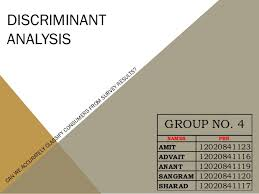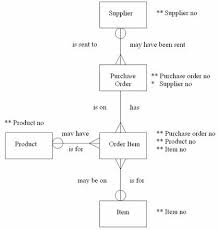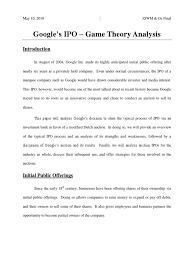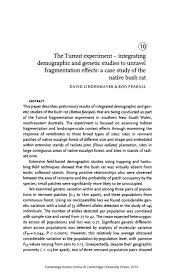
Current Business Problem Case Analysis
In the Week 3 Discussion, you selected a current business problem from the following case categories:
- Banking
- Fuel and the Environment
- GMOs
- Factory Farming
- Pharmaceuticals
- Gender Discrimination
In this written assignment, you will present your work on the case analysis using selected components of an argumentative essay as described in Sections 9.1 and 9.2 of With Good Reason: A Guide to Critical Thinking (Hardy, Foster, & Zúñiga y Postigo, 2015). This written assignment will include a revised and polished version of your discussion work, the presentation and support of two premises, and an analysis of how your chosen ethical theory offers the best moral solution to the business problem in your case analysis.
Using the components of the argumentative essay located in Sections 9.1 and 9.2 of With Good Reason: A Guide to Critical Thinking (Hardy, Foster, & Zúñiga y Postigo (2015), your assignment should include the following:
An introduction. This is the “Problem” portion of the essay that is covered in Section 9.1: The Argumentative Essay (Hardy, Foster, & Zúñiga y Postigo, 2015). This should be an improved version of the introduction in your initial post, revised on the basis of your professor’s feedback and additional research. In this introduction you will need to (a) identify the specific issue or problem that you want to address and give an impartial presentation of the controversy, (b) articulate briefly the characteristics of the economic system that serves as the setting for the business, and (c) examine the laws that affect the operations of the business. The introduction should be one paragraph of around 200 words in length.
A thesis. Start a new paragraph with a precise and clear sentence in which you state your moral position with regard to the case that you presented in your first paragraph. This is known as stating your thesis. (See the “Thesis” passage in “The Argumentative Essay” in Hardy, Foster, & Zúñiga y Postigo, 2015). The thesis you state here should be an improved version of the thesis in your initial post in the discussion, revised on the basis of your professor’s feedback and your reading of “The Argumentative Essay” indicated above.
A thesis is only one sentence, so do not write a series of sentences, or a complex sentence with explanatory clauses (e.g., “because…” or “since…” or “according to Dr. Mary Expert, an economist with the Bureau of Labor statistics…”, or “a law that was ratified with 80% votes in favor…”). An example of a precise and clear thesis is this: “Factory farms are not morally justifiable” or, of course, the opposite point of view: “Factory farms are morally justifiable.” Keep in mind that your thesis in this assignment will be the basis for the argumentative essay of the Week 5 written assignment, so take your time when formulating this thesis.
Ethical theory. In the same second paragraph as the thesis statement, identify the ethical theory that supports your moral position. You may choose from utilitarianism, duty ethics, or virtue ethics. Present the characteristics of the ethical theory in a broad sketch, and include citations and references in APA form. Then, apply your chosen ethical theory by explaining how it lends itself to the moral position that you are defending.
Two premises. Present at least two reasons in support of your thesis and these should be presented in the form of a claim. These are called premises. Articulate each premise in one clear and grammatically correct sentence. Review Section 9.1 of With Good Reason: A Guide to Critical Thinking (Foster, Hardy, and Zúñiga y Postigo, 2015). Start a new paragraph for each.
In the rest of the paragraph, support your premise by presenting an analysis of how the ethical theory lends itself to the best solution. This analysis includes articulating the characteristics(s) of the economic system at work that support the claims in your premises. It also includes examining the effects of the law(s) at work that also support the claims in your premises.
Comparative analysis. In the final paragraph, analyze how this application lends itself to a solution that is superior to that offered by one of the ethical theories that you did not select. To do this, provide a clear statement describing the moral solution offered by this other theory. For example, if you chose utilitarianism to apply to your case, then you can choose from either virtue ethics or deontology for your comparative analysis. Explain in no more than three sentences what moral solution would result from the application of this other ethical theory. See the “Sample Case Analysis Preview the document” for an illustration of how this would look like. Finally, analyze the strengths of the moral solution presented by your chosen ethical theory in ways that demonstrate how it is superior to the moral solution offered by the other ethical theory.
Once you receive your assignment back from your professor, start working on revisions based on your professor’s feedback. This is the first step in preparing your Final Project and the details are presented on the Final Project’s prompt. You will benefit from starting your Final Project as soon as you receive your assignment back from your professor.
Requirements for Your Assignment:
- Your assignment should be 1000 words in length, excluding the title page and reference page(s).
- Your examination should be both thorough and succinct. This is a combination that demands time and thought, so give yourself sufficient time to draft and revise.
- Your assignment should include citations, as well as a list of references. Both must be in APA form.
- You should draw from the sources provided in your chosen case category in the discussion this week.
- Also refer to Section 9.1: The Argumentative Essay and the introduction to Section 9.2: Strengthening the Argumentative Essay (intro only for the latter) from Hardy, J., Foster, C., & Zúñiga y Postigo, G. (2015).
- Your references should include at least two scholarly sources from your own research in the Ashford University Library, Google Scholar (this is not the same as Google), or the Stanford Encyclopedia of Philosophy. No Wikipedia articles and the like should be included in the references, nor employed to inform your paper. Also keep in mind that dictionary definitions are not references in the academic
We can write this or a similar paper for you! Simply fill the order form!












